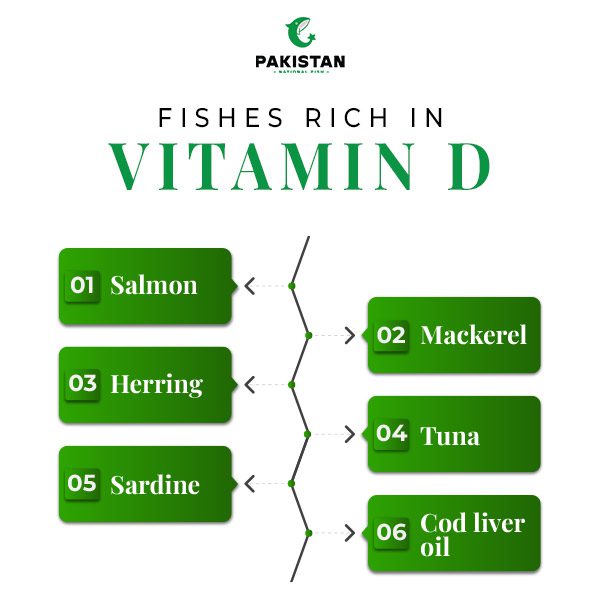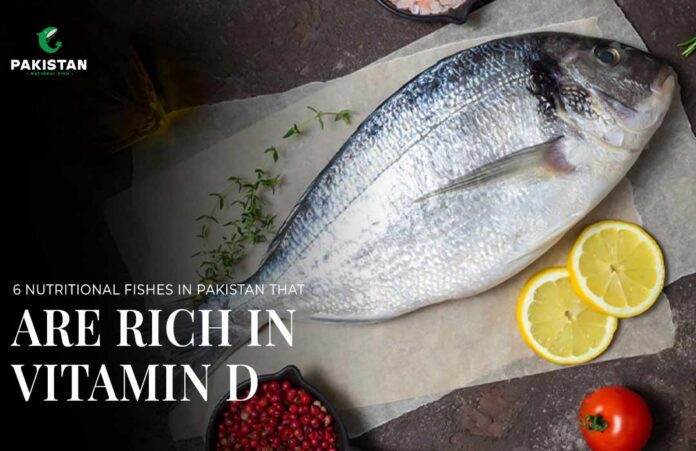Some body processes, including bone health, are impacted by vitamin D. Low vitamin D levels have also been linked to an increased risk of autoimmune illnesses, according to research. A lot of individuals don’t get enough vitamin D. The number of defective people is difficult to estimate since specialists cannot agree on appropriate target levels.
Studies indicate that approximately 35 percent of adults are vitamin D deficient. There may be a higher incidence of insufficiency in other parts of the world. Eighty percent of adults in Bangladesh, India, and Pakistan are thought to be vitamin D deficient. This deficiency can be minimized by consuming different types of fish in Pakistan.
When we are in the sun, our bodies create vitamin D. It’s challenging to obtain adequate vitamin D in this method for a few reasons:
- Skin Cancer Prevention
- Wear sunscreen, cover-up, and stay indoors during hot hours.
- Individuals with higher melanin levels may have lower vitamin D levels.
- Global sun exposure may be limited.
The Best 6 Best Fishes Rich In Vitamin D
Here are the best fishes rich in vitamin D:

1. Salmon
Salmon is a popular fatty fish in Pakistan that is high in vitamin D. A serving of farmed Atlantic salmon weighing 3.5 ounces (100 grams) provides 526 IU of vitamin D, or 66% of the daily requirement.
The amount of vitamin D in salmon varies significantly depending on whether it is wild or farmed. Wild-caught salmon tend to have higher vitamin D content. The location and season of the salmon’s catch will affect its vitamin D content. According to one study, 3.5 ounces (100 grams) of salmon fished in the Baltic Sea had 556–924 IU of vitamin D, or 70–111% of the Daily Value.
2. Mackerel
Vitamin D-rich, fatty fish is mackerel. A serving of 3.5 ounces (100 grams) contains about 360 IU of vitamin D. This quantity represents 45% of the daily recommended intake (RDI). You can increase your vitamin D levels by eating mackerel. It provides a considerable amount of omega-3 fatty acids as well. Eat smoked, roasted, or grilled mackerel for a healthy supper.
3. Herring
Fish called herring is consumed all across the world. Usually, it’s pickled or smoked. This little fish is a fantastic source of vitamin D as well. A 3.5-ounce (100-gram) meal of fresh Atlantic herring contains 214 IU or 27% of the DV.
If you prefer pickled herring to fresh fish, a 3.5-ounce (100-gram) portion of pickled herring contains 113 IU or 14% of the Daily Value for vitamin D. Pickled herring has a high salt content as well—each serving has 870 mg. If you’re attempting to reduce your salt intake, it might not be the best choice.
4. Tuna
The flavour and convenience of canning make tuna a favourite among many. In most cases, it is less expensive than purchasing fresh fish. A 3.5-ounce (100-gram) portion of canned light tuna contains up to 269 IU of vitamin D, or 34% of the Daily Value.
Fish of various kinds contain the heavy metal mercury. Bigger types of fish contain more mercury than smaller ones. The amount of mercury in canned tuna depends on the type of tuna. Light canned tuna comes from smaller fish and is lower in mercury. White canned tuna is higher in mercury.
It is advised by the Environmental Defense Fund (EDF) to limit light tuna consumption to one weekly serving of 3.5 ounces (100 grams). Consult a physician about the recommended weekly intake of tuna if you’re worried about mercury consumption.
5. Sardine
A Nutritious Source of Vitamin D. Sardines is a rich source of vitamin D, with a serving of 3.5 ounces containing 34% of the daily recommended intake. It is extremely high in calcium, protein, and omega-3 fatty acids.
It is consumed grilled, in salads, or on toast. Omega-3 fatty acids promote heart, bone, and overall wellness.
6. Codfish
The liver of codfish is used to make cod liver oil, which has a very high vitamin D content. The supplement cod liver oil is well-liked. If fish isn’t your thing, you can still obtain essential nutrients by consuming cod liver oil.
It’s a great place to get vitamin D. At around 450 IU per teaspoon (4.9 mL), it represents a whopping 56% of the Daily Value. It has been used for treating vitamin D deficiency for a long time. Additionally, it has a history of usage in the treatment of psoriasis, TB, and rickets
Additionally, cod liver oil has a very high vitamin A content; one teaspoon (4.9 mL) contains 150% of the daily value. Excessive levels of vitamin A might be hazardous. Vitamin A has a safe upper limit (UL) of 3,000 mcg. The amount of vitamin A in one teaspoon (4.9 mL) of cod liver oil is 1,350 mcg.
5. Golden Trout (oncorhynchus Aguabonita)
The optimum time to fish for trout varies according to the season, time of day, and temperature. Just like freshwater fishing, trout fishing is available all year round. However, to improve your chances of success, consider the following tips:
- The general opinion is that late spring is the ideal time to capture trout, particularly if you want bigger fish.
- The warmer it gets, the more anglers are fishing, the denser the grass and brush around their habitats, and the lower the water levels become. Although some consider it a myth, trout could be better educated about avoiding lures and bait later in the season.
- Because trout are cold-blooded and their body temperatures reflect the water they swim in, if the air temperature is uncomfortable for you (below freezing or unbearably hot), fishing will also be uncomfortable for them.
Conclusion
Adding vitamin D-rich fish to your diet—like tuna, mackerel, salmon, sardines, and herring—can help you keep your vitamin D levels at a healthy level. Because of their high omega-3 fatty acid content, these fish not only offer additional health benefits but also vital elements that support the immune system and bone health. If you don’t get much sun exposure, eating these fish on a regular basis might help make sure you get the required daily dose of vitamin D. Adding this fish to your diet in a variety of delectable dishes can help it stay nutritious and healthful.


